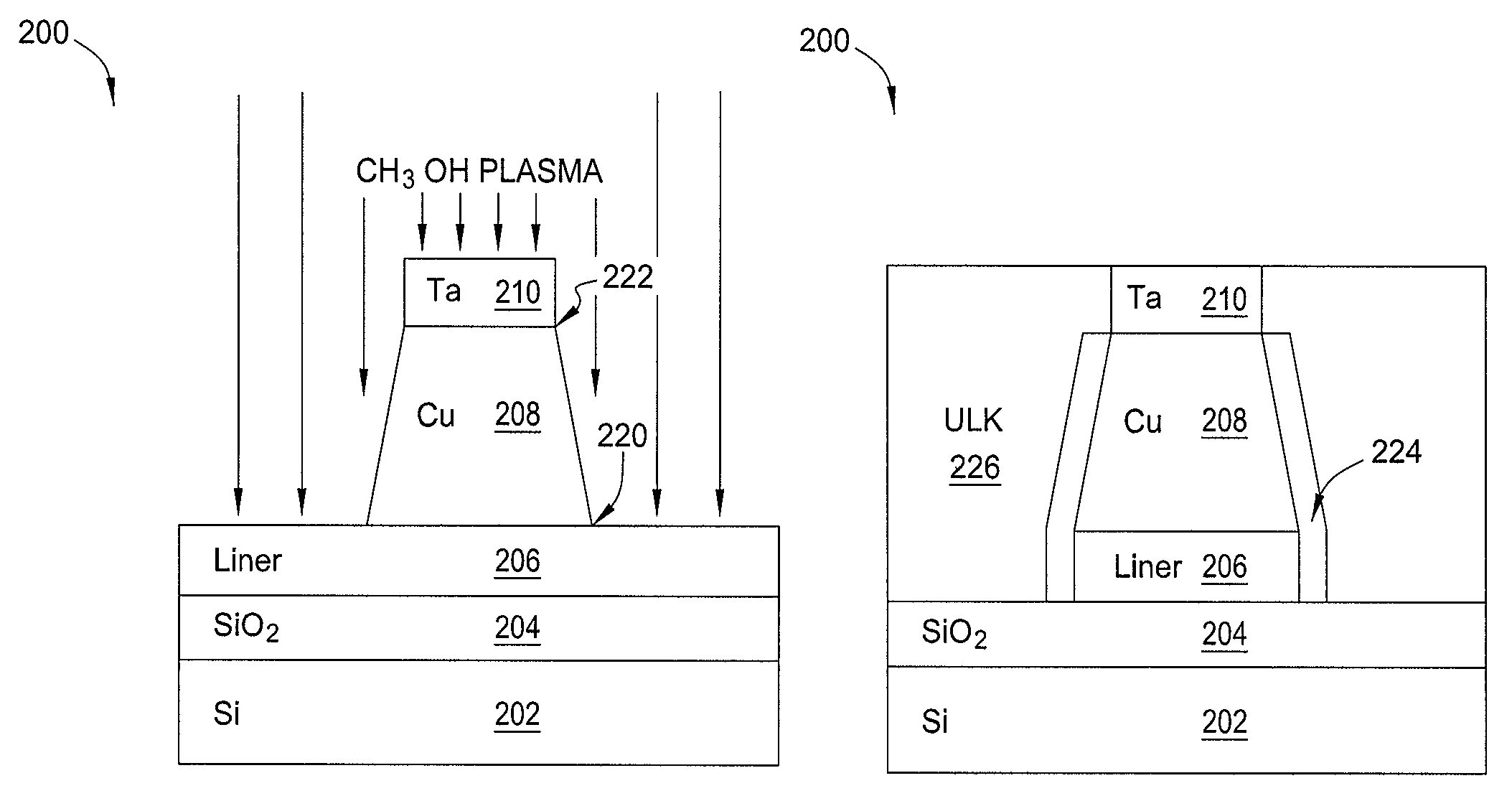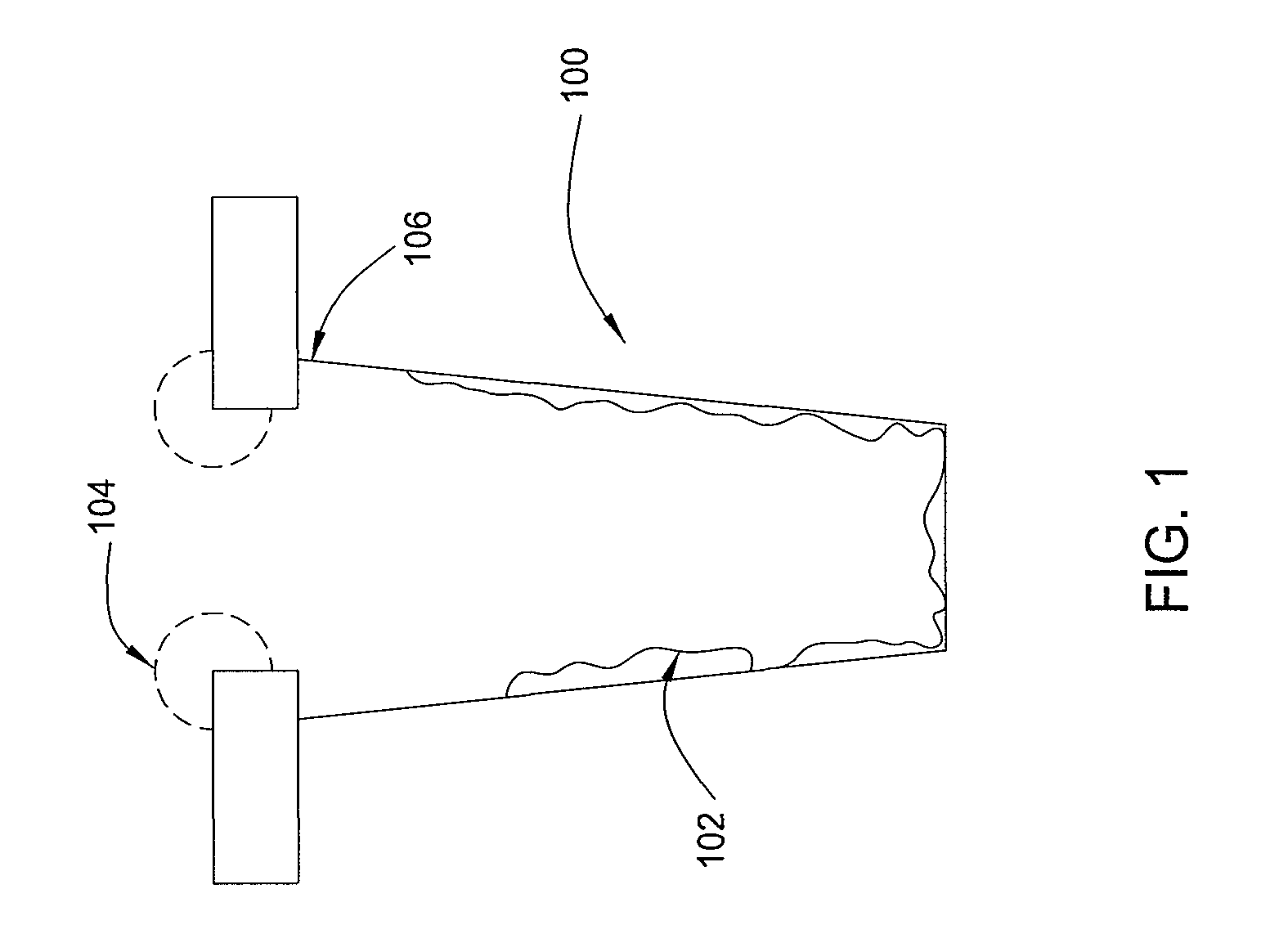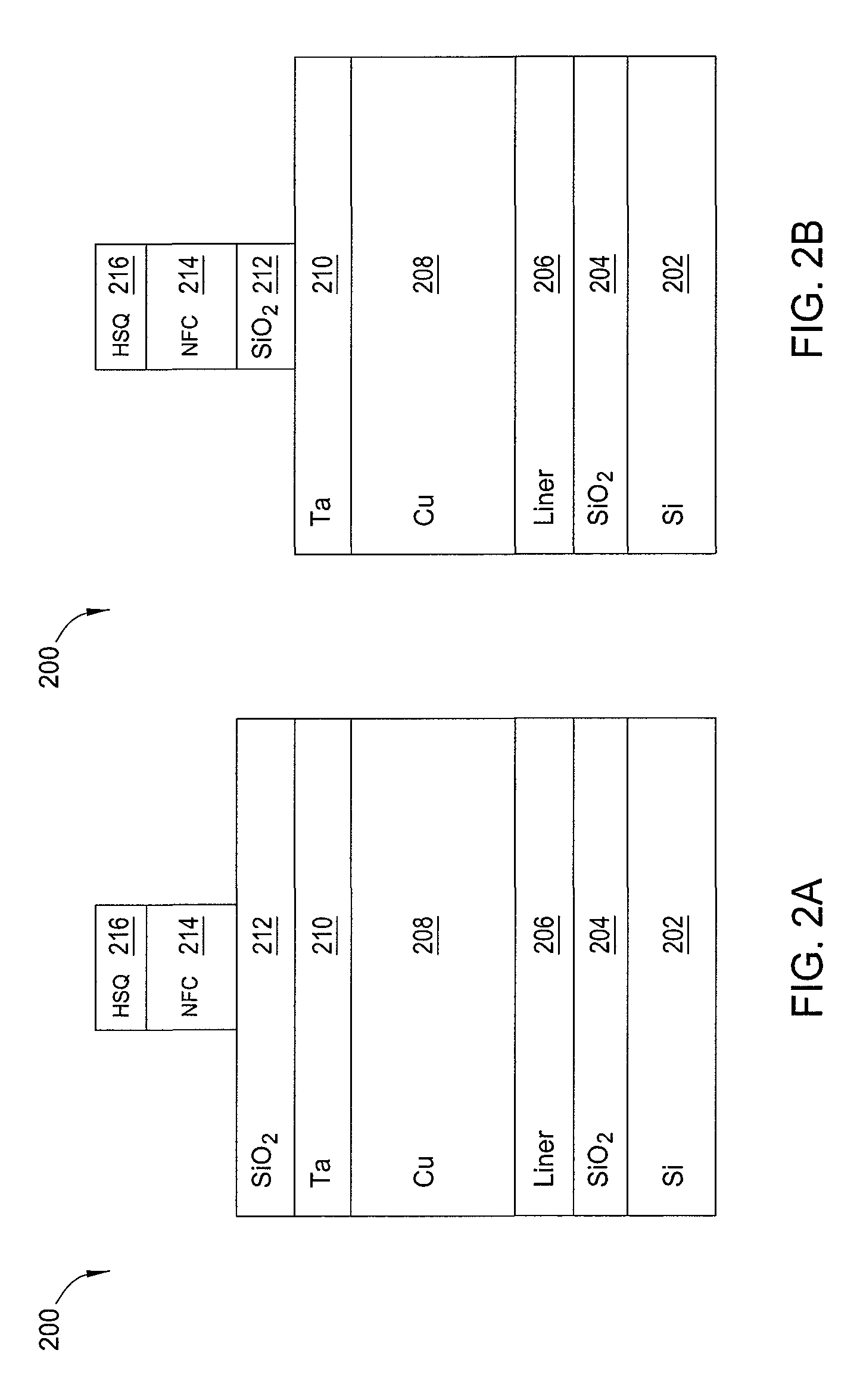Sputter and surface modification etch processing for metal patterning in integrated circuits
a technology of integrated circuits and surface modification, which is applied in the direction of semiconductor devices, semiconductor/solid-state device details, electrical apparatus, etc., can solve the problems of reentrant reactive ion etching profiles, poor liner/seed coverage on the walls of trenches, and damascene processing that is not always compatible with the trend toward smaller feature sizes
- Summary
- Abstract
- Description
- Claims
- Application Information
AI Technical Summary
Benefits of technology
Problems solved by technology
Method used
Image
Examples
Embodiment Construction
[0011]In one embodiment, the invention is a method and apparatus for metal patterning using a sputter etch process. Embodiments of the invention pattern fine metal lines on an insulating layer of an integrated circuit via a subtractive process (i.e., a process that creates a desired structure by removing material rather than by adding material). In a particular embodiment, the subtractive process uses methanol etch chemistry. The methanol etch process may comprise a single-step process including only a methanol plasma etch, or a two-step process including methanol plasma etch followed by a second plasma etch using a different plasma chemistry. The disclosed process maximizes metal grain growth and minimizes metal resistivity. In addition, the disclosed process allows for flexibility in the choice of materials used for trench liners and minimizes low-k / ultra-low-k damage phenomena due to hard mask stripping and chemical mechanical polishing.
[0012]FIGS. 2A-2I are schematic diagrams il...
PUM
 Login to View More
Login to View More Abstract
Description
Claims
Application Information
 Login to View More
Login to View More - R&D
- Intellectual Property
- Life Sciences
- Materials
- Tech Scout
- Unparalleled Data Quality
- Higher Quality Content
- 60% Fewer Hallucinations
Browse by: Latest US Patents, China's latest patents, Technical Efficacy Thesaurus, Application Domain, Technology Topic, Popular Technical Reports.
© 2025 PatSnap. All rights reserved.Legal|Privacy policy|Modern Slavery Act Transparency Statement|Sitemap|About US| Contact US: help@patsnap.com



